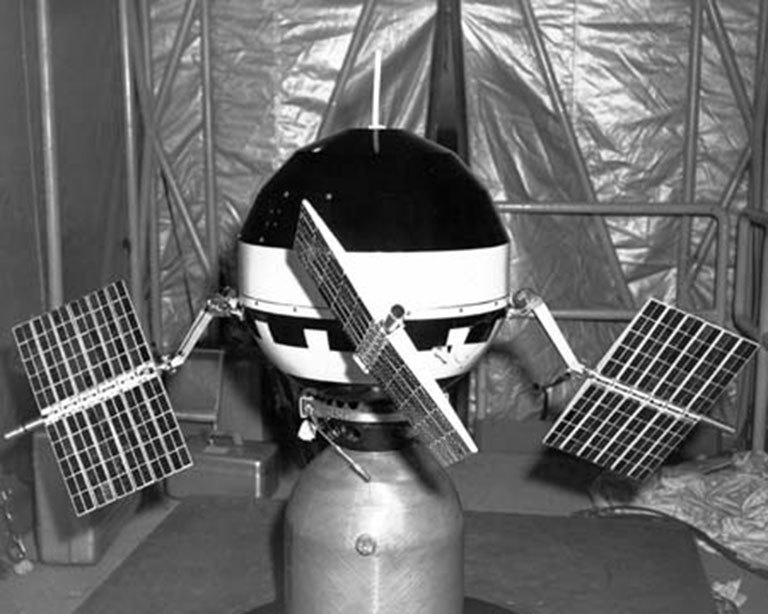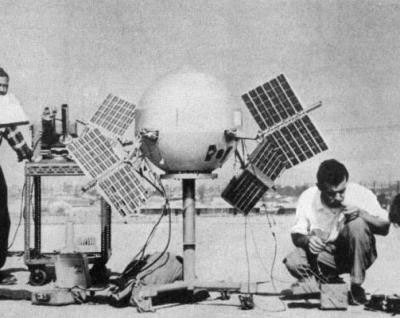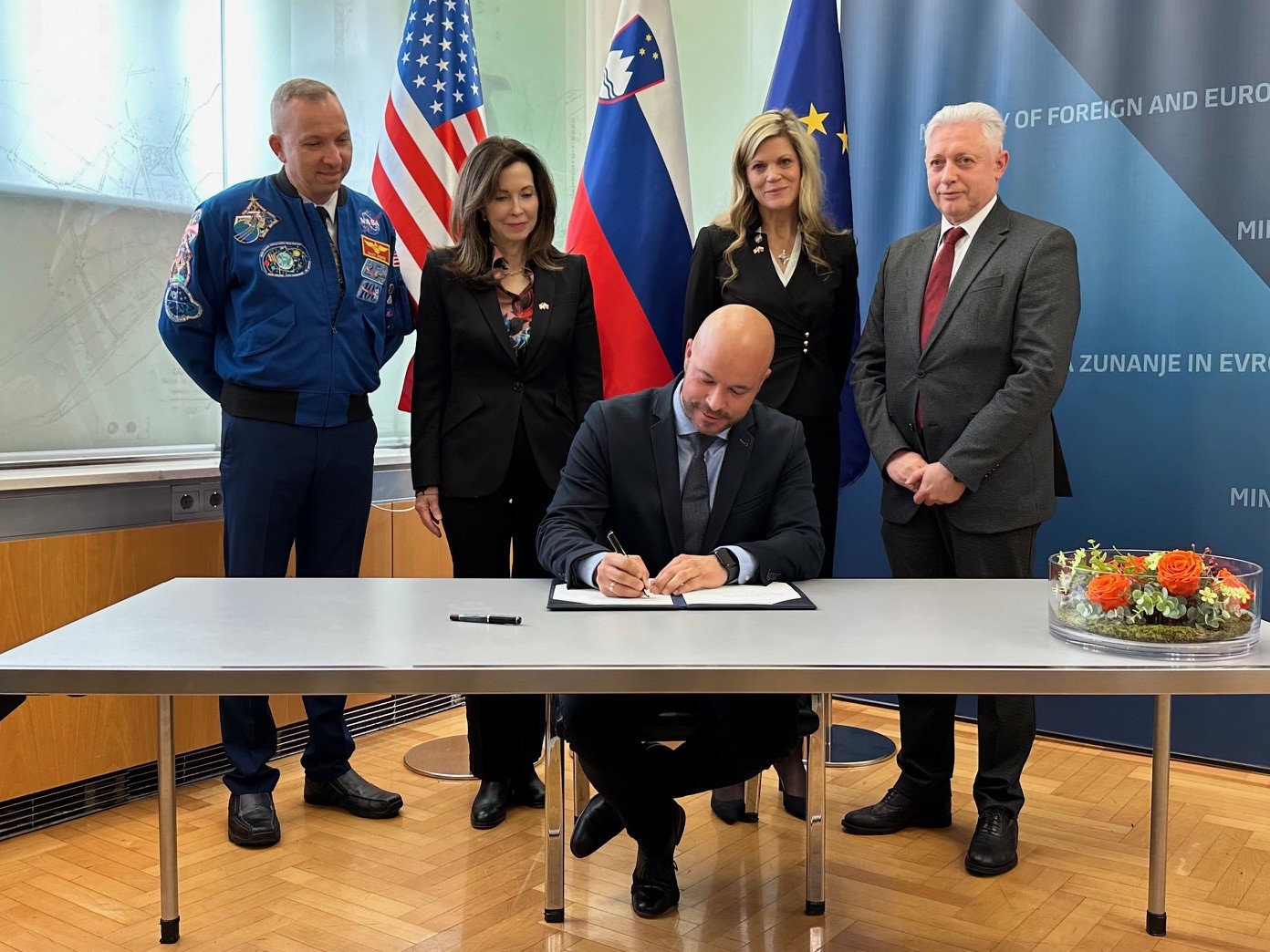Pioneer 5
Type
Launch
Target
Objective
NASA's Pioneer 5 provided the first map of the interplanetary magnetic field. This mission was part of the famous Pioneer program—which included far-ranging Pioneers 10 and 11—that charted the space between the planets.

What was Pioneer 5?
NASA's Pioneer 5 provided the first map of the interplanetary magnetic field. This mission was part of the famous Pioneer program—which included far-ranging Pioneers 10 and 11—that charted the space between the planets.
- Pioneer 5 was the first deep space mission to carry Telebit, a digital telemetry system with data rates of 1 to 64 bits per second. Telebit was tested in Earth orbit by Explorer 6.
- The spacecraft confirmed scientist's theories of a weak interplanetary magnetic field.
- It was originally intended to go to Venus.
Nation | United States (7) |
Objective(s) | Heliocentric Orbit |
Spacecraft Mass | 95 pounds (43.2 kilograms) |
Spacecraft | P-2 / Able 6 |
Mission Design and Management | NASA / U.S. Air Force Ballistic Missile Division |
Launch Vehicle | Thor Able IV (Thor Able IV no. 4 / Thor no. 219/DM-1812-6A) |
Launch Date and Time | March 11, 1960 / 13:00:07 UT |
Launch Site | Cape Canaveral / Launch Complex 17A |
Scientific Instruments | 1. Magnetometer 2. Ionization Chamber 3, Geiger-Mueller Tube 4. Micrometeoroid Momentum Spectrometer 5. Photoelectric Cell Aspect Indicator 6. Proportional Counter Telescope |
Key Dates
Mar. 11, 1960: Launch
June 26, 1960: Last contact
In Depth: Pioneer 5
Launched on a direct solar orbit trajectory, Pioneer 5 successfully reached heliocentric orbit between Earth and Venus to demonstrate deep space technologies and to provide the first map of the interplanetary magnetic field.
The spacecraft had originally been intended for a Venus encounter, but the mission was switched to a direct entry into solar orbit.

Pioneer 5 carried Telebit, the first digital telemetry system operationally used on a U.S. spacecraft. It was first tested on Explorer 6. The system used a 5-watt or a 150-watt transmitter, with a 5-watt transmitter acting as driver. Information rates varied from 1 to 64 bits per second.
Controllers maintained contact with Pioneer 5 until 11:31 UT on June 26, 1960, to a record distance of 22.6 million miles (36.4 million kilometers) from Earth (later beaten by Mariner 2).
The probe, using its 40-pound (18.1-kilogram) suite of scientific instruments, confirmed the existence of a previously conjectured weak interplanetary magnetic field. Information from the magnetometer was unfortunately unusable due to the instrument’s position within the spacecraft.
Pioneer 5 remains a derelict spacecraft circling the Sun.
Additional Resources
Key Source
Siddiqi, Asif A. Beyond Earth: A Chronicle of Deep Space Exploration, 1958-2016. NASA History Program Office, 2018.








